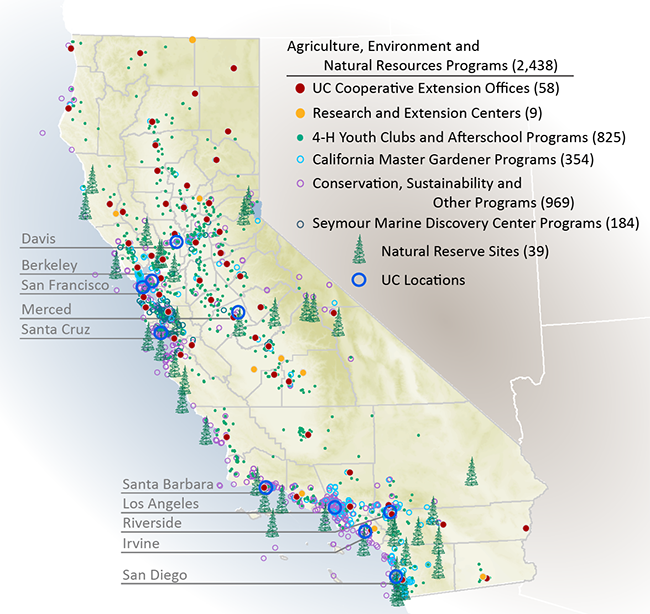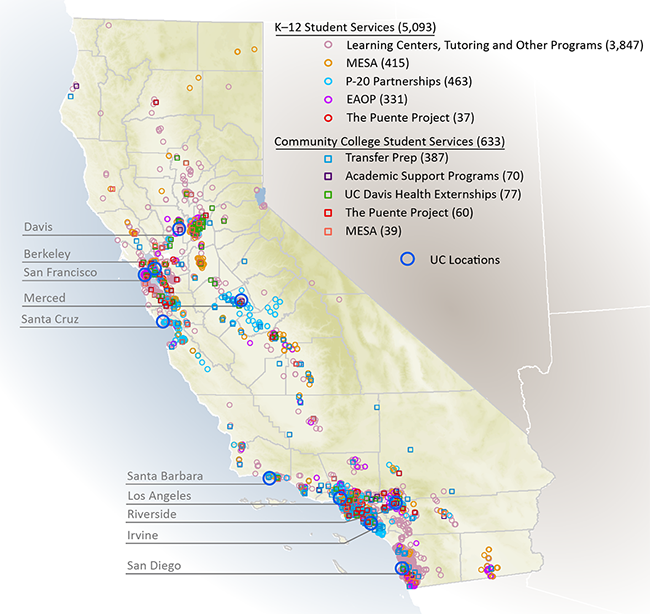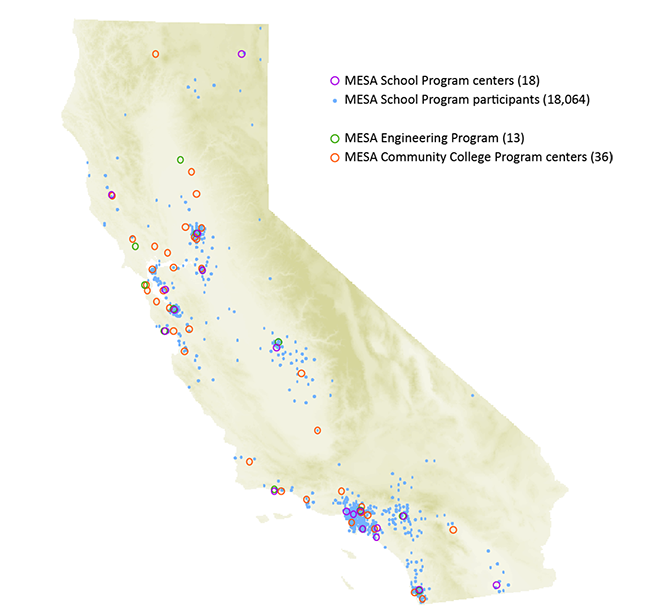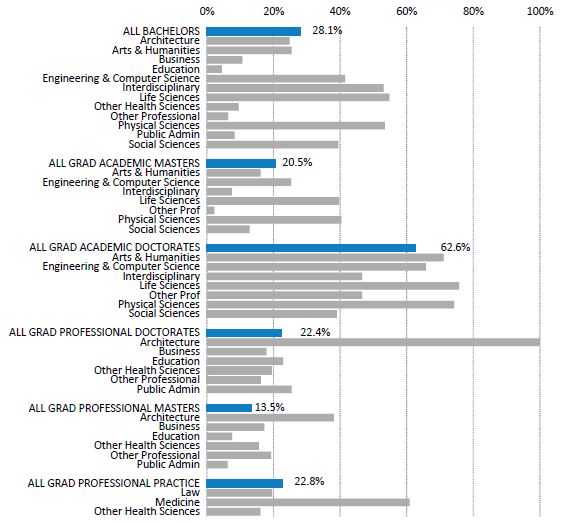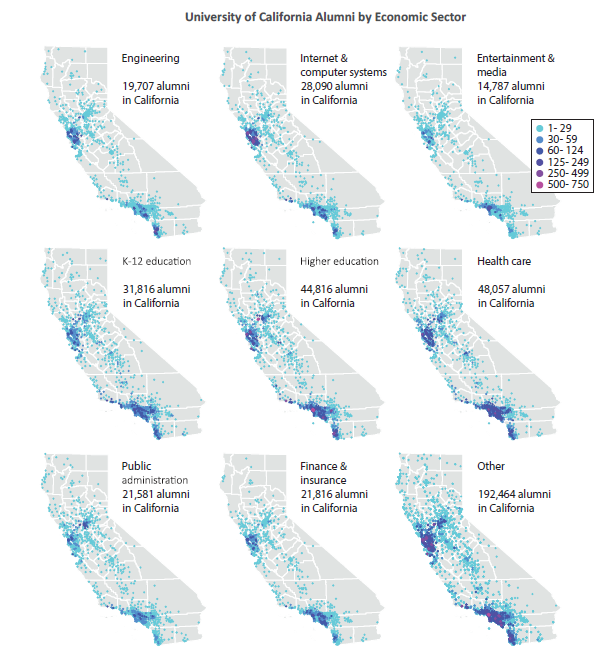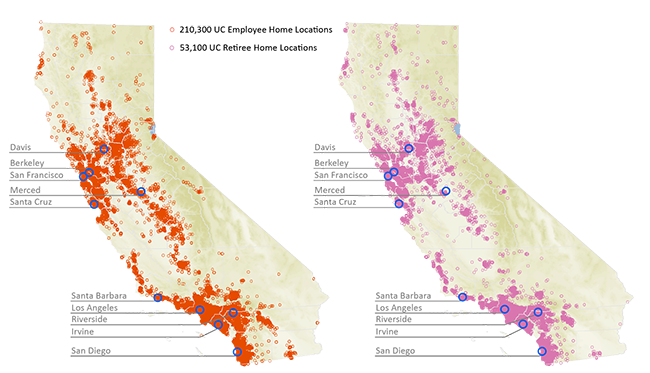The public service mission
As a service to the state of California and its residents, UC’s manages an extensive network of world-class museums, libraries, herbaria and other facilities that are open to the public. The University hosts a wide range of performances and events that attract audiences from all parts of the state. But beyond its campus-based resources and services, UC’s impact can be seen throughout the state, with a significant presence in nearly every community.
UC contributes significantly to the well-being of the state’s population and its economic growth through its public service mission — a fundamental and defining feature of UC throughout its history. The University’s origins, and the nature of its public service mission, can be traced to the Morrill Land-Grant Act of 1862. UC was chartered in 1868 as California’s land-grant university, and since its founding, UC’s public service mission and its other two missions of teaching and research have been closely intertwined.
This chapter highlights aspects of life in California where UC’s impact has been and continues to be profound: agriculture, environmental stewardship, health, education at all levels and the overall economy.
Agricultural research and extension
Federal legislation subsequent to the Morrill Land-Grant Act expanded the mission of the nation’s land-grant institutions to conduct research in Agricultural Experiment Stations (AES) and to connect that research with local communities throughout each state through Cooperative Extension (CE). These two divisions, AES and CE, are under the leadership of the UC systemwide Division of Agriculture and Natural Resources (ANR). ANR coordinates the AES multi-campus organized research unit. While both AES and CE conduct research, CE is also the outreach arm for ANR. CE serves the public in all 58 California counties, bringing UC research to local communities to address real-world problems.
ANR operates a vast, statewide network of researchers and educators dedicated to the creation, development and application of knowledge in agricultural, natural and human resources. ANR develops and delivers science-based solutions for healthier food systems, healthier environments and healthier Californians. Overseeing 3,000 local partnership programs, ANR maintains and enhances connections that engage UC with the people of California (see map indicators 10.1.1 and 10.1.2 in this chapter).
Across all campuses and divisions, the University operates at least 21,000 community-based programs (a conservative estimate). These programs can be explored via a UCOP-produced interactive map, UC in California: Impact Beyond Campus Borders, which highlights UC-operated community-based programs across the state and allows searching legislative districts, counties, regions and campuses.
Find the map at: http://ucal.us/maps.
Agricultural sustainability
ANR serves as the bridge between local agricultural and environmental issues and the power of UC. California’s $57 billion agriculture sector (2015) is a major contributor to the food supply of not just the state, but the nation and the world. California’s continued success in agriculture depends on adopting scientific and technological innovations derived from the results of research. ANR works with communities and industries to enhance California’s agricultural economy; to ensure safe and secure food supplies; to manage pests and diseases; to improve water quality, quantity and security; to increase science literacy in agriculture and nutrition; and to improve energy security and green technologies.
Environmental stewardship
UC’s public service mission includes an extensive portfolio of environmental stewardship activities.
ANR manages a wide network of conservation and sustainability programs addressing critical issues such as drought, climate change and invasive species, contributing to improved environmental quality and natural resources conservation. The public service impact of ANR academics is greatly extended by the statewide California Naturalist Program, which uses a hands-on science curriculum and citizen science to foster a diverse cadre of volunteers, working with federal, state, local and nonprofit organizations.
The University of California directly manages lands representing most of the state’s ecosystems, which are utilized for research, teaching and public service. The UC Natural Reserve System comprises 39 sites with more than 756,000 acres across California. These lands provide undisturbed environments to conduct research; enhance students’ educational experiences; and provide sites for public service programs. The latest addition is the Merced Vernal Pools and Grasslands reserve, next to UC Merced.
Health and nutrition programs
UC’s research activities, particularly clinical trials, help improve health outcomes by understanding diseases and finding effective treatments (see Chapter 9: Research). Chapter 11 (UC Health) describes UC’s role in training California’s health care workforce and providing direct care to residents.
Beyond these functions, UC’s five medical centers serve as the state’s fourth-largest health care delivery system, and engage in a wide range of activities to address the needs of specific populations. For example, UC’s five medical centers maintain long-term institutional partnerships with regional Veterans Affairs Health Care systems. In addition to conducting research on health issues of concern to veterans, such as traumatic brain injury and post-traumatic stress disorder, UC faculty and medical students provide quality care for several thousand veterans annually through the VA.
UC also expands its health outreach through telemedicine, providing care for patients living in rural areas or in areas where specialty experts are not available. Telemedicine activities include real-time video and phone consultations between UC health care specialists and staff in clinics, hospitals, emergency rooms and intensive care units.
Both on campus and in communities throughout the state, promoting healthy outcomes for all Californians is an important element of UC’s public service mission. ANR delivers community partnership programs statewide to address childhood obesity, healthy choices and food insecurity. For California, ANR directs the national Expanded Food and Nutrition Education Program (EFNEP) and the Supplemental Nutrition Assistance Program Education (SNAP-Ed), known as UC CalFresh in California. These programs assist limited-resource families to develop knowledge, skills, attitudes and behaviors that help them tackle social and health disparities associated with hunger, malnutrition, poverty and obesity. Through these programs, families change the way they eat, practice food safety and food budgeting, and become more physically active. ANR also informs local, statewide and national nutrition policy.
Education partnerships
For more than 40 years, the University of California’s Student Academic Preparation and Educational Partnerships (SAPEP) programs have helped prepare California students for higher education. SAPEP programs such as the Early Academic Outreach Program (EAOP), Mathematics, Engineering, Science Achievement (MESA) and The Puente Project are designed to improve academic preparation for students by focusing on specific areas of college readiness.
In addition to the activities UC undertakes to strengthen K–12 and community college students academically, UC plays an important role in preparing California’s teacher workforce. UC’s Teacher Education Programs prepare teacher candidates to engage students in rigorous, relevant and inquiry-based educational experiences. Located at eight UC campuses, Teacher Education Programs recruit, prepare and support educators who are committed to academic excellence, equity and integrity, and to cultivating the highest levels of achievement and opportunity for all students.
UC also provides ongoing support to educators already in the workforce through professional development programs. For example, the California Subject Matter Project (CSMP) is a network of nine discipline-based statewide projects, providing more than 2,000 professional development programs for educators at more than 10,000 schools each year. CSMP professional learning opportunities are aligned with state-adopted standards and are collaboratively designed by K-12 and university educators to enhance learning for all students.
UC’s economic impact
As California’s economy becomes increasingly dependent on highly educated workers, the role of the University of California in training the state’s future workforce becomes more vital. Industries relying on skilled workers in the STEM fields (science, technology, engineering and mathematics) represent a major component of California’s economy. UC awards half of the state’s bachelor’s degrees in STEM fields.
UC’s operations also add significantly to the state’s economy, as it is one of California’s largest employers. With expenditures of about $29.5 billion, much in the form of salaries, wages and benefits, UC annually generates more than $46 billion in economic activity in California. UC contributes more than $32 billion to the gross state product and attracts over $8 billion in annual funding from outside the state.
True to its land-grant mission, the UC system touches most aspects of society. The UC public service mission has evolved in tandem with the changing needs of our state and our local communities, and has developed programs and partnerships that improve the lives of all Californians.
For more information
UC Information Center dashboards:
